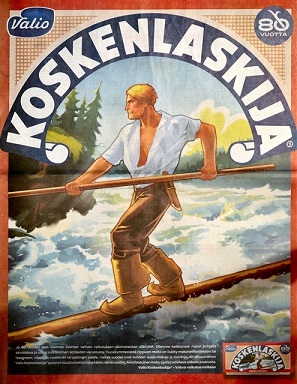
The Logger's Hut in the wilderness.
Log driving means moving logs and timber by the downstream of inland rivers and lakes. In logging industry log driving was the main transportation method while moving timber from the logging site in the wilderness to sawmills for further refinement for the lumber industrial needs. The tree felling in the forests and in the wilderness was done in winter times, the men left their homes and traveled sometimes hundreds of kilometers/miles to reach the logging site. There the men worked for the wintering months cutting trees and getting paid by the foremen and the supervisors, living in with the societies in logger's huts, drinking and gambling their money. At the dawning spring, how to make the long way back to home, after long separation get back to wife with empty pockets, not a dime for the family and household. Log driving was common in the 19th and the 20th century in the US, Canada, Scandinavia and the Soviet Union.


Driving logs needs good rations - Koskenlaskija (The Floating Man) cheese and an American logger.
To enter for the timber and logging industry for a common man or a common woman was basically rather easy. No academic exams needed. The men had still to be strong, self-conscious and no cry-babies needed. The few women were needed to keep the 'home' at the logger's hut - the base camp, make coffee, tea, food, to socialize with the men and the pretty looks gave also some hope for the men exhausted of the work.
Log driving was a lifeline for the common people in the countries previously mentioned. The life and the livelihood was organized in accordance with winter tree-cutting and summer log-driving. In some countries it had a national affect while this logger's industry was written in biographies by the contemporaries. Novels and series of books basing on the true events were best-sellers. What a young human experienced during his early ages (5-30) was written in books some 40 years later.


A two-man saw to cut huge wilderness trees. Log driver's tools how to steer the logs in the downstream or when a log-block happened.
Summary. The women and the men lodged in the logger's huts beyond the infrastructure and roads for many months. The trees were cut in winter. During the early 1900's the logger's tools were still running only by manpower, however the first chainsaws running by fuel were just entering. Every logger or a group of loggers had a column in the wilderness and it had to be "timbered" before the coming spring. The logs were moved and carried to the roadside and the horsemen took the load. Otherwise the logs were transported to rivers and lakes through the wilderness and waterspouts to be transported for the industry.


